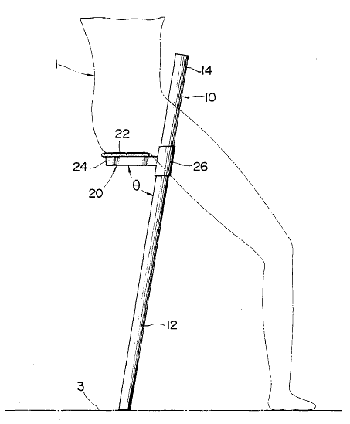The Quality of Chairness
December 3, 2010
"One cannot conceive anything so strange and so implausible that it has not already been said by one philosopher or another."
As an undergraduate student, I enrolled in nearly as many
philosophy courses as
science courses. The history of human thought is interesting in its own right, and it's only in the last few hundreds of years that we've made a distinction between science and philosophy. In
Newton's day, science was called
Natural Philosophy. The term science, referring to what today's scientists do, has only been in common parlance since the 1870s, although the term, scientist, was first used in 1833 by
William Whewel. Whewel was very adept at coining new words. He invented the term,
physicist, for which I and my 47,946 fellow members of the
American Physical Society are thankful; and he suggested that
Michael Faraday call opposing electrodes
anodes and
cathodes.[2]
In graduate school it wasn't possible for me to enroll in further philosophy courses, but one of the first things I did was attend one of their seminars. A prominent philosopher from an
Ivy League school was there to present his latest paper. What a shock! My undergraduate exposure to philosophy had been all classical, and this was my first experience with a contemporary philosopher. His seminar involved his reading the paper verbatim and entertaining questions afterwards. Even in those days, scientists used transparencies and overhead projectors to relay key points, but this apparently wasn't the vogue in philosophy. I was surprised that he didn't don an
academic robe before his reading. It was all too strange. I've always summarized the topic of his paper as "the quality of chairness," much to the amusement of my children.
The quality of chairness is that which makes a chair, a chair. Four legs - yes, that's a chair - but so are three legs and sometimes a single leg (see figure). Not only that, but a desk is a chair when you sit on it. Does the desk forsake its quality of "deskness" when that happens, or was it always both a desk
and a chair? When you attempt to define a chair this way, things get very difficult. An analogy to this in the sciences would be a theoretical paper that attempts to integrate similar phenomena into a unified principle. The difference is that a theoretical paper in the sciences has been fueled by quite a few experiments and is based on mathematics. For these reasons, it's quite possible to compare the theory with reality to see whether it's a good synthesis. In short, a scientific paper has the quality of
falsifiability. The philosophy paper has an internal
logical consistency, but it's not falsifiable. Since it's unlikely that the author would make a mistake in logic, you can just argue the validity of his
axioms.

A single-legged chair from US Patent No. 4,930,839.[3]
Philosophers do their thing, as described by the chair example, and scientists do something else. Since
C.P. Snow's time, there's been discussion of these
Two Cultures. Snow himself believed that a merger of the cultures was ongoing, but I'm not so sure about that. Science is very difficult to understand for non-scientists, and the
Sokal Affair serves as an example of this. Even scientists in one field have little understanding of what's happening in others, and I touched on this problem in a
previous article (Codex Arxivus, July 2, 2010). The interesting thing is that it's very possible for a scientist to write a bad paper on philosophy (and there are many, this article included), but it's impossible for a philosopher to write any sort of scientific paper. It seems as if most of the effort for any unification of the cultures must be done from the non-science culture. If there's a middle ground to be reached, then the philosophers will need to walk the longer distance.
In internet parlance, the preceding sentence could be called "
flamebait," but the purpose of this article is not to deflate the importance of philosophy and inflate the egos of scientists; its purpose is to encourage philosophers to read more science, and scientists to read more philosophy. Philosophy is interesting and important.
Plato's Allegory of the Cave in
The Republic is an idea that's important to keep in mind even today when discussing
M-Theory. If the
universe is indeed a
hologram, Plato might have a claim to priority. However, the pressing question is this - Whenever we sit, we do our sitting in the universe. Does the universe, therefore, have the quality of chairness?

Head of Plato, via Wikimedia Commons.
![]()
References:
- René Descartes, "Le Discours de la Méthode," (1637); also known as "Discourse on the Method of Rightly Conducting the Reason, and Seeking Truth in the Sciences."
- William Whewel page on Wikipedia.
- Osamu Saito, Kazuko Iwabo and Yasushi Ikeda, "Single-legged chair," US Patent No. 4930839 (June 5, 1990).
Permanent Link to this article
Linked Keywords: Philosophy; science; Isaac Newton; Natural Philosophy; William Whewel; physicist; American Physical Society; Michael Faraday; anode; cathode; Ivy League; academic robe; falsifiability; logical consistency; axiom; US Patent No. 4,930,839; C.P. Snow; Two Cultures; Sokal Affair; arXiv; flamebait; Plato; Allegory of the Cave; The Republic; M-Theory; universe; Holographic Universe; hologram.